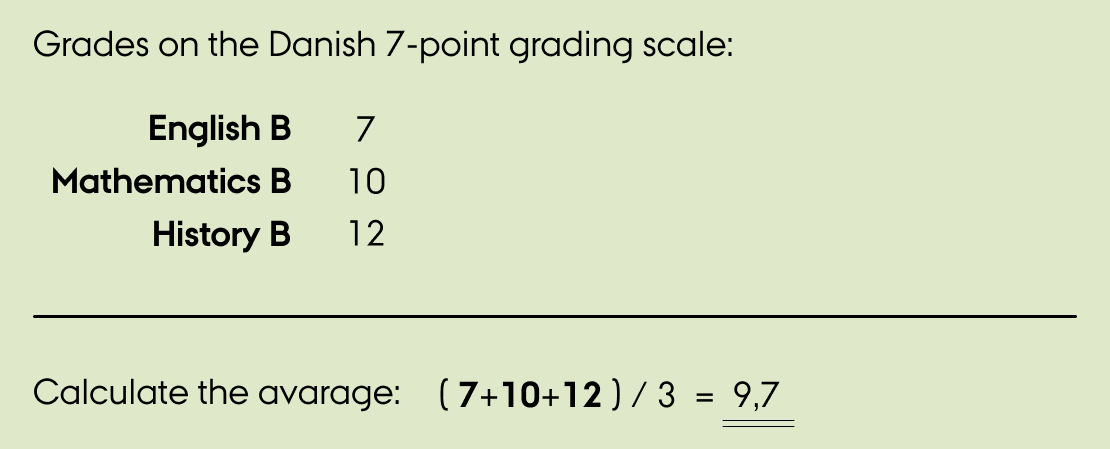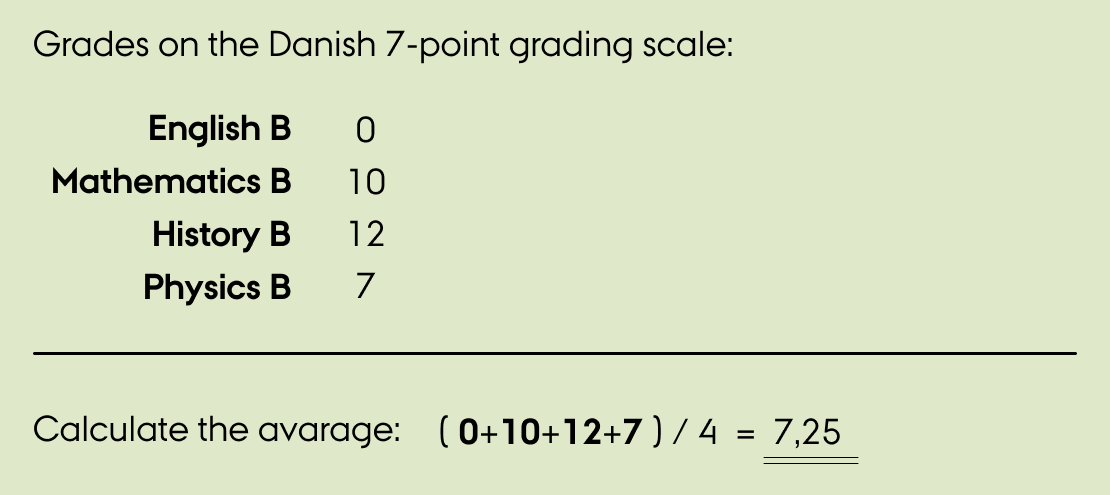Quota 1 and quota 2 is how we allocate student places in Denmark.
Quota 1 admissions are allocated according to the grade point average of your upper secondary education.
Quota 2 admissions are allocated according to various selection criteria.
Even though the two quotas have different selection criteria, they are equally good.
For both quotas you must have a qualifying entry examination and fulfil the specific admission requirements for your desired programme(s).
You do not have the option to choose which quota to apply for in your application. All international applicants are automatically assessed in quota 2. Depending on your qualifying entry examination your application may also be assessed in quota 1.
No. Quota 1 and quota 2 is solely a part of the admission process and has no effect on your studies after you have been admitted. If you are offered a student place you do not know whether your application has been assessed in quota 1 or quota 2.
The assessment in quota 1 is based on the first completed qualifying examination and the principle of descending order of grade point average (GPA).
This means that applicants with the highest GPA will be admitted until there are no more available student places. The last admitted applicant’s GPA is the GPA cut-off for each programme. This can differ from year to year depending on number of student places and the qualifications of the applicants. You can find the GPA cut-off on the programmes’ websites. The GPA cut-off is first known when the admission process is completed on 28 July.
You cannot improve the GPA from your first qualifying examination. However, you are welcome to take supplementary courses in order to fulfil the admission requirements. The grades from your supplementary courses will not be used in the quota 1 assessment.
The quota 2 assessment is an overall assessment based on the following criteria for our English taught programmes:
All qualifications must be completed and documented no later than 15 March.
Your quota 2 GPA is your grade point average of the quota 2 subjects for the programme(s) you are applying for.

The quota 2 GPA is therefore 9,7 on the Danish 7-point grading scale in this example.
There may be several grades registered for each single subject as we can use grades from state exams as well as the grades from the last year of the upper secondary education. In this case, an average will be used for each subject to calculate the quota 2 GPA.

In this example, the applicant has taken an English language test and their quota 2 GPA is therefore 7,3 on the Danish 7-point grading scale. This application will therefore automatically be sent for a special assessment.
When you take an English language test you will not be able to see a grade for your English subject on MyApplication.au.dk.
Applicants with an English language test will go through an automatic special assessment which will compensate for the missing grade in the overall quota 2 assessment. The special assessment is a part of the overall quota 2 assessment.
When you have applied for a programme, you will receive a link for MyApplication.au.dk. During June you will be able to see your quota 2 GPA and how it is calculated.
In addition to your quota 2 GPA, we also look at your relevant qualifications.
If we find that you have documented relevant qualifications, we can for example add 0.4, 1.0, 1.5 or more to your quota 2 GPA, thus improving your overall quota 2 assessment.
Relevant qualifications can be work experience (both paid an unpaid), internships, passed education, military enlistment or if you have studied at a folk high school (højskole).
On our website Bachelor.au.dk, you can find examples of relevant qualifications for the programme you wish to apply for.
Examples of non-relevant qualifications:
You generally need to document activities of minimum 4 months and maximum 12 months.
We encourage you to upload all documentation to your application even if it is of a shorter time frame. It will not affect your application if the qualifications cannot be taken into consideration. If you document activities of more than 12 months, then we take the activities into account that gives you the best quota 2 assessment.
If you do not have relevant qualifications, your application will still be assessed based on your quota 2 GPA. For example if you graduate the same year that you apply, you will usually not be able to document relevant qualifications.
The documentation deadline for relevant qualifications is 15 March.
You must attach all documentation to your quota 2 application at www.optagelse.dk. The documentation deadline means that only activities documented no later 15 March can be taken into consideration.
It is very important that you document your qualifications correctly.
Your documentation must fulfil the following requirements:
Please note that it is your responsibility that all your documentation complies with our guidelines.